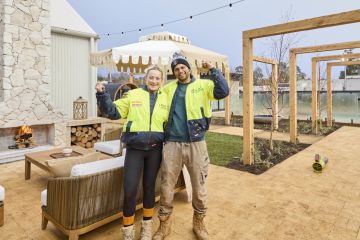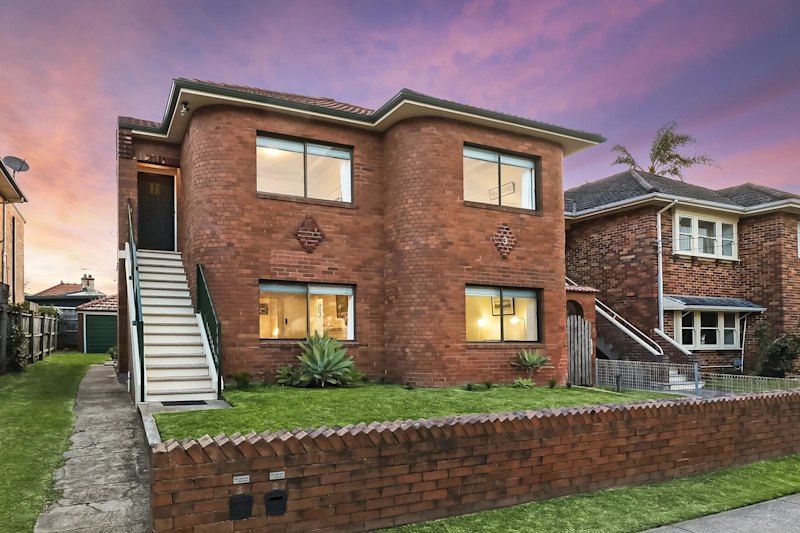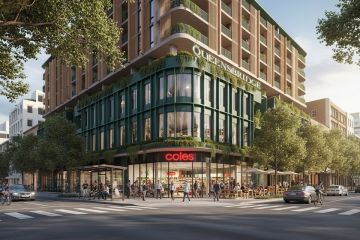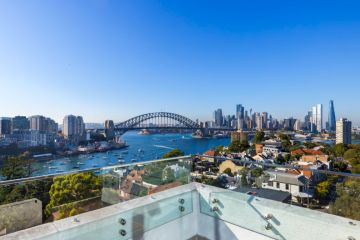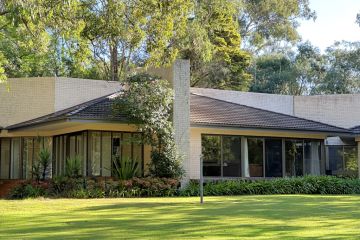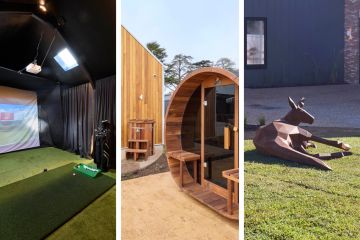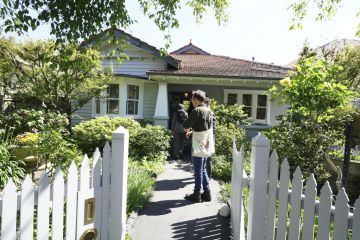Homes designed with protection in mind

It’s certainly time to consider home security when America’s Centres for Disease Control and Prevention (the CDC) decide to not take any chances with even the most remotely possible of disasters.
The CDC has blogged about the dangers of a zombie apocalypse, and to quote the blog: “That’s right, I said z-o-m-b-i-e a-p-o-c-a-l-y-p-s-e. You may laugh now, but when it happens you’ll be happy you read this.”
The fine print actually reads “maybe you’ll even learn a thing or two about how to prepare for a real emergency”. Despite that, there is quite a lot of helpful info about defence against the undead to be found there.
For our purposes, we will be looking at ways people have set up their homes to defend themselves against zombie attack, as well as other potentially life-threatening situations like crime and bushfire.
Concrete box that thinks it’s a flower

If outstanding architecture is at the top of your list, along with superior zombie protection, then this house is for you.
It is near Warsaw in Poland and is called the “Safe House” by architect Robert Konieczny of Polish architecture firm, kwk promes. It seals up like a solid concrete box with just a drawbridge as access, creating an impenetrable “safe zone”.
The client’s top priority for the project, which was completed in 2009, was “a feeling of maximum security”.
From the outside, the house could certainly pass for a maximum security prison; indeed, the architects call it “a concrete monolith”. However, this home is full of surprises.
A series of ingenious motorised walls of massive proportions, window shutters, and the kind of giant roll-down gate normally seen only on aircraft hangars, combine to transform the imposing bunker into a light-filled home with floor-to-ceiling glass walls and stunning views of the surrounding gardens.
The two moving walls are 2.2 metres high and 15 and 22 metres long respectively; they slide back to reveal the living areas of the home to the outside world. The imposing roll-down door, at 14 metres by six metres, doubles as an outdoor cinema screen.
Not only is your family’s security taken care of, the house has also been designed with the environment in mind. In fact, the designers liken the house to “a flower that wakes up in the morning and closes up at dusk, staying in sync with its environment”.
Nuke-proof

At the opposite end of the super-safe home spectrum is the trend in the US to convert cold war missile silos into homes. Where better to live safely and securely than an ex-military site designed to survive nuclear attack?
One such redevelopment was undertaken by Ed Peden, who spent $US48,000 on his decommissioned missile site in 1982; now named Subterra, it is located in a 16-hectare estate.
The silo was built in 1960 for $US2.3 million but abandoned in the ’70s. By the ’90s it had been transformed: once the location of an Atlas E intercontinental ballistic missile with a four-megaton warhead, it is now the cosy and somewhat quirky home of Peden and his wife Dianna.
Peden may have started with 2.5 metres of rainwater and many tonnes of rubbish to deal with, but he’s now left with two observation towers, a 1022-square-metre underground garage with a 47-tonne nuke-proof door, 14 square metres of underground entry tunnels and more than 604 square metres of underground living space in a three-level underground home.
In fact, Peden was so taken by the unique properties of his home that he started a business buying, selling and helping people convert decommissioned military sites. His company, 20th Century Castles, had sold 49 silos, bunkers, vaults, communications stations and other military relics by 2010.
If you are concerned about the structural integrity of these old places, Peden’s site notes that the “earth-contact-hardened, nuclear-proof structures are some of the strongest construction ever built on the planet.” So, no risk from zombie attack there.
Fire safety

If bushfires are the main threat to your family’s safety, one of these fire shelters is for you.
Wildfire Safety Bunkers produces fire shelters based on the designs used for cyclone, hurricane and tornado conditions in the US.
The bunkers have been modified specifically for our bushfire conditions and are the first and only ones to be accredited by the Building Regulations Advisory Committee of Australia “for use in areas classified up to bushfire attack level (FZ) flame zone”.
They have a number of safety features, are easy to install and can be relocated if necessary.
Safety measures include: water tanks for rooftop sprinklers, a fresh circulation air reserve, a temperature gauge and a high temperature window to allow occupants to check on conditions outside.
Batteries can be installed that will power mobile phone chargers, as well as strobe lights and sirens to help locate the bunker in thick smoke. There is even a jack to help open the door in case debris has blocked the path.
Just bear in mind that one of the “safety” features of the bunker is that there is no locking mechanism. This prevents people accidentally being locked in or out.
Even a giant horde of the undead wouldn’t have a lot of smarts between them, but one would rather have some kind of lock on the door, to be on the safe side.
Don’t panic

For those with plenty of cash who fear for their personal safety, a panic room is a must.
avd Australia build what it calls “safe rooms”, also known as “strong rooms”.
The example on the company’s website is right out of Hollywood. The room is sunk into the ground under the house, with the entrance disguised as shiny metal floor panels.
To allow access, the floor panels rise up and swing apart, described as a “butterfly movement” by avd.
As an extra layer of security, the hallway in which the safe room entrance lies is also protected by a security door, thereby stalling the progress of any intruders.
Both sets of doors open and close in about two seconds and are G2-rated blast-proof.
Once inside, the home owner has access to a plethora of high-tech surveillance and security equipment. avd notes that further details “for obvious reasons are not available for publication”.
For those concerned about the cost of these structures, the company has this advice: “A safe room can be configured into a dual purpose area such as a walk-in pantry, walk-in wardrobe, cellar, bathroom, ensuite or general storage area”, thus “ensuring the cost of the room is justifiable”.
You would certainly sleep easier knowing that, come the zombie apocalypse, you will be safely ensconced in your bullet- and bomb-proof, walk-in wardrobe.
We recommend
We thought you might like
States
Capital Cities
Capital Cities - Rentals
Popular Areas
Allhomes
More
